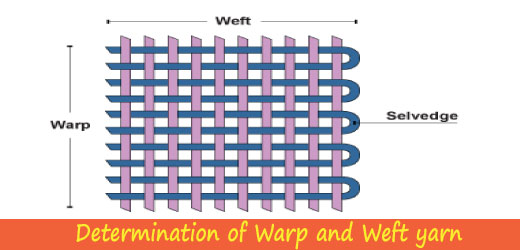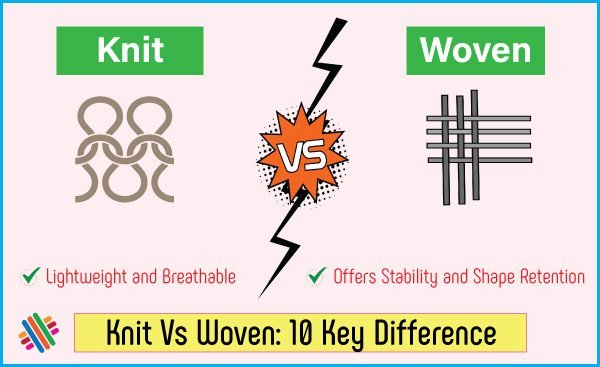How to Identify the Warp and Weft yarn of a Woven Fabric
Last updated on July 16th, 2023 at 12:00 am
Persons, who deal with fabrics, as well as the home sewing consumer, must be able to identify the warp and the weft or filling yarns, because the direction of the warp determines the way in which the fabric should be cut when a garment is made from it. In a new piece of cloth, the direction of the warp is easily distinguished. The length of the fabric indicates the warp yarns. Also, if a piece of the fabric shows part of the selvedge, which is the firm edge of the cloth, then the yarns parallel to the selvedge are warp yarns. The opposite yarns are the filling yarns. When a sample of fabric contains no selvedges, the warp and filling may be identified by observation of the weave:
- In plain weaves, a greater number of yarns running in one direction indicate the warp.
- In twill weaves, the filling yarns run in the direction of the diagonal, which may be toward the right or toward the left.
- In satin weaves, the floating yarns are more likely to be the warp yarns. When one runs a finger over the fabric in both directions, the finger will slide more easily in the direction of the floats. Usually the floats will be in the warp, unless the fabric is cotton. Cotton is more likely to have the floats in the filling.
When the name of the fabric is known, its characteristics features aid in distinguishing the warp and filling. For example, the ribs of dimity and of pique run in the direction of the warp; the ribs of rep, faille, bengaline, and poplin in the direction of the filling. When colored stripes show in such fabrics as chambray, madras shirtings, and in some dress goods, the direction in which the stripe runs usually indicates the warp.
When the warp and the filling cannot be identified by the foregoing aids, the sets of yarns may be examined for the following characteristics:
- Exerting tension on a sample by holding it in both hands and pulling, at the same time pressing with the thumbs and forefingers, will show which set of yarns is stronger. The stronger set will be the warp, because warp yarns have to withstand the tension of the heddles in the weaving process. The filling yarn, which travels through the shed and across warp yarns to form the fabric, is under little tension.
- When one set contains yarns of varying sizes, this set is usually the warp. Filling yarns are usually of the same size.
- The set of yarns that can be more easily stretched is the filling.
- Yarns of inferior quality are commonly used as filling in inexpensive fabrics. When both sets of yarns are carefully compared, the inferior yarn is usually the filling.
- When a yarn has a hard twist, as in serges and over coatings, it is generally the warp yarn.
- Yarns with slack twist usually are the filling yarns. Yarns with little twist are used as filling when a soft, lustrous effect is desired.
- If one set consists of thicker yarns, this indicates the filling, as the bulk produced by behavior yarns dispenses with the need for a great amount of twist.
- If ply yarns are used, they probably indicate the warp.
- In a napped fabric, the warp runs in the direction of the napping, because the fabric has been run through the machine in the direction of its length.
- In light weight fabric, a marked evenness between the yarns indicates the warp. This evenness is the result of mechanical movement of the reed as it battens the filling yarns when the cloth is constructed. In patterned weaves, such as herringbone twill, the impact of the battening operation leaves small reed marks that distinguish filling from warp yarns.





Nice
Hello, I read your blog occasionally, and I own a similar one, and I was just wondering if you get a lot of spam remarks? If so how do you stop it, any plugin or anything you can advise? I get so much lately it’s driving me insane, so any assistance is very much appreciated.